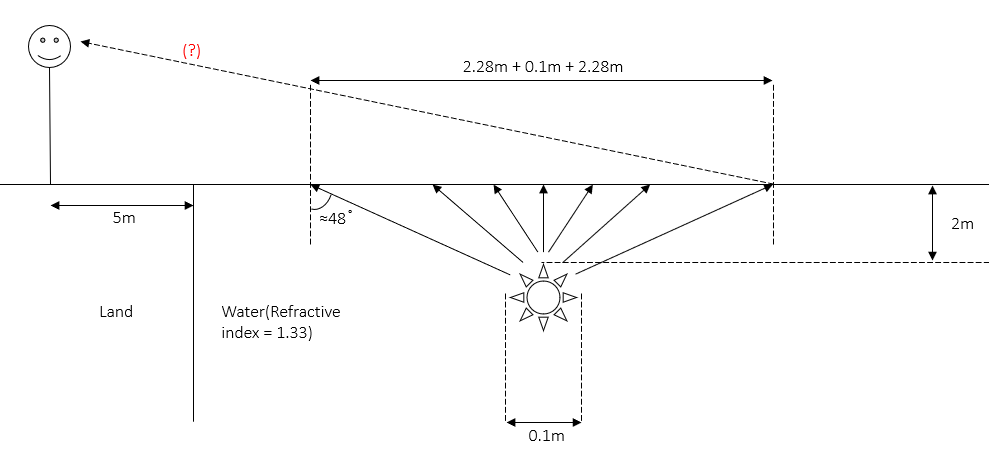Edit
This question is badly written and (if they gave the correct answer as 4.66m as you put in your question) then not physically accurate at all.
The question asks...
A lightsource of diameter 10cm is placed 2m underneath the surface of a pool, a person 5m away from the edge of the pool saw a circle of light emitting from the lamp. Calculate the maximum diameter of the circle of light seen by the person. (Use refractive index = 1.33)
This is a really badly formed question.
What it is asking as written and what it is trying to get you to calculate are two vastly different things.
What it is trying to get you to calculate...
...is the diameter of the circle of light that will escape the water and not undergo total internal reflection.
This is indeed about 4.66m.
But... the person plays absolutely no part in this at all. The introduction of the person in this question throws this off completely and is a complete red herring.
Also... the fact that the light source is 10cm in diameter is completely irrelevant too. I mean... it slightly (very slightly) will affect the diameter of the circle you calculate. But not by much.
What the question is asking as written...
... is to calculate the apparent size of the light source as seen by the person.
To be able to answer this question you would need to know the size of the light source, the height of the person, the distance of the light source from the edge of the pool, etc...
This will be approximately 10cm. Maybe a few percent bigger than 10cm.
How the question should have been written...
A point lightsource is placed 2m underneath the surface of a pool. Calculate the maximum diameter of the circle of light that is emitted out of the pool. (Use refractive index = 1.33)
Conclusion
I'm not surprised you were confused by this and I apologise for not spotting this ambiguity earlier. It was only when I was trying to draw this myself that I realised what was going on.
If you were given this by a teacher you should mention to them that the question needs rewriting to remove...
- the person
- the size of the light source (it should be a point light source)
- the distance between the light source and the edge of the pool
... and also that the question needs rewriting.

